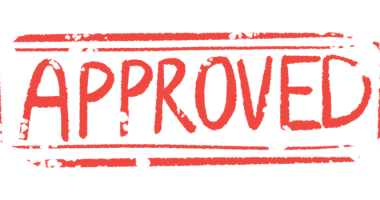AstraZeneca caps out-of-pocket costs of meds for eligible patients
US patients may pay $35 monthly for inhaled COPD drugs starting in June

Out-of-pocket costs for AstraZeneca’s inhaled respiratory therapies — most of which are used for chronic obstructive pulmonary disease (COPD) — will be capped at $35 per month for eligible patients in the U.S. starting in June, the company announced in a press release.
This cap, likely to benefit most commercially insured patients, comes as an expansion of AstraZeneca’s savings program in the U.S. for its entire portfolio of approved inhaled respiratory therapies. This includes the COPD medications Symbicort (budesonide-formoterol), Bevespi Aerosphere (glycopyrronium/formoterol fumarate), and Breztri Aerosphere (budesonide/glycopyrronium/formoterol fumarate), as well as an asthma treatment called Airsupra (albuterol and budesonide).
“AstraZeneca’s expanded savings programs build on our longstanding commitment to addressing barriers to access and affordability for patients living with respiratory diseases to ultimately help patients lead healthier lives,” said Pascal Soriot, CEO of AstraZeneca.
The company has a couple of different savings programs in place. The monthly cap comes as part of its copay savings program, which intends to help people with commercial health insurance pay less in out-of-pocket costs for their prescriptions.
Individuals on federal insurance programs (e.g., Medicare, Medicaid) are not eligible for this type of support due to government restrictions. But the company also offers the AZ&Me Prescription Savings Program to help people on federal insurance or who are uninsured to access its medications. Patients enrolled in this program typically receive their medications at no cost.
Patients often must pay out-of-pocket costs despite commercial insurance
As of Jan. 1, AstraZeneca also “substantially reduced the list price” of Symbicort in the U.S., the company noted in the release. That price cut followed a decline in Symbicort sales, by 16%, late last year after the first generic version of the therapy, called Breyna, entered the U.S. market in the third quarter of 2023, according to a year-end fiscal report.
Generics, while containing the same active ingredient and held to equivalent safety and efficacy standards as the brand-name therapy, are usually offered at a lower price.
Viatris, which markets Breyna, also has a copay assistance program for commercially insured patients through which a monthly supply could cost as little as $20 in out-of-pocket costs. A patient assistance program also is available to help those with financial needs access Viatris’ medications at no charge.
AstraZeneca noted it will continue to offer discounts and rebates to Symbicort’s list price to help ensure affordability for patients. The overall goal, the company states, is to make these inhaled treatments more accessible for “the most vulnerable patients” living with these conditions, including people who have insufficient or no health insurance.
We remain dedicated to addressing the need for affordability of our medicines, but the system is complex and we cannot do it alone. … It is critical that Congress bring together key stakeholders to help reform the healthcare system so patients can afford the medicines they need, not just today, but for the future.
Inhaled therapies are the cornerstone of treatment for COPD, in which inflammation causes damage to the lungs and makes it harder to breathe.
There are three main types of medications typically contained in these inhalers. These include long-acting beta-agonists (LABAs), long-acting muscarinic antagonists (LAMAs), and/or corticosteroids.
LAMAs and LABAs are bronchodilators, medications that work to relax and open the airways to make breathing easier. Corticosteroids, meanwhile, are intended to reduce inflammation.
First approved in the U.S. as a maintenance therapy for COPD in 2009, Symbicort is a combination of a LABA bronchodilator (formoterol) and a corticosteroid (budesonide).
Approved in 2016, Bevespi also contains the LABA formoterol, as well as a LAMA called glycopyrrolate. Breztri, which combines all three of the ingredients found in Symbicort and Bevespi, was approved in 2020 as a COPD maintenance therapy. No generics are currently available for either of these two medications in the U.S.
“We remain dedicated to addressing the need for affordability of our medicines, but the system is complex and we cannot do it alone,” Soriot said.
“It is critical that Congress bring together key stakeholders to help reform the healthcare system so patients can afford the medicines they need, not just today, but for the future,” Soriot added.







